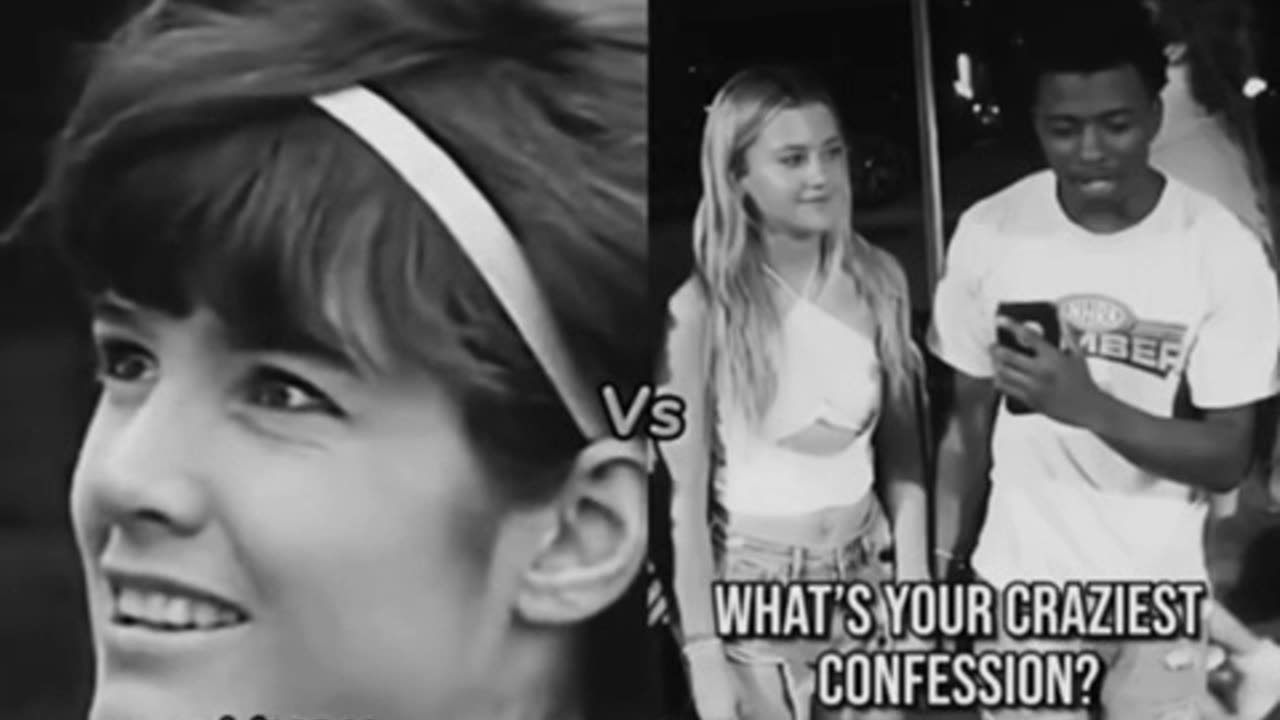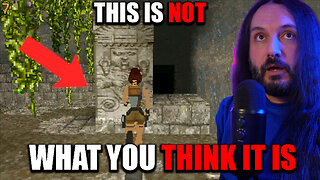Premium Only Content

From Grace to Chaos? A Reflection on the Evolution of Women’s Values from the 1960s to Modern Day
The juxtaposition of women from the 1960s with contemporary women, as captured in a viral video clip, paints a stark and provocative picture of how values, priorities, and societal expectations have shifted over time. This comparison not only highlights how culture has evolved but also raises profound questions about the trajectory of modern society and the forces that shape our ideals.
1. The 1960s Woman: Grace, Family, and Values
In the 1960s, society often idealized women as the anchors of the home and family. The women interviewed in the clip reflected values rooted in kindness, sincerity, and affection:
• Priorities in a Partner: When asked what they looked for in a man, women emphasized qualities like personality, warmth, and a love for children. Looks and wealth, while acknowledged, were secondary to emotional depth and reliability.
• Focus on Family and Community: The importance of family and shared values was central. Relationships were often framed as partnerships built on mutual respect, responsibility, and a sense of duty.
This era, often criticized for its rigid gender roles, also fostered an environment where grace, humility, and emotional connection were prized. Women navigated their lives within societal constraints but often found dignity and fulfillment in nurturing relationships and their roles in the community.
2. The Modern Woman: Independence, Freedom, and Raw Expression
Fast forward to today, and the clip shifts to a series of interviews with modern women. Here, the tone is markedly different:
• Bold Confessions: The women openly share explicit details about their sexual experiences, including casual encounters and unfiltered confessions. Their candor reflects a broader societal shift toward celebrating sexual freedom and breaking down taboos.
• Individual Empowerment: Responses about relationships and attire highlight a strong emphasis on independence. Women reject the idea of partners having any influence over their choices, asserting full autonomy over their lives and decisions.
• A Different Value System: Traits like kindness or warmth are largely absent from these interviews, replaced by a focus on personal satisfaction, humor, and self-expression.
While this openness may be seen as a step toward liberation from outdated norms, it also raises questions about whether the pendulum has swung too far toward hyper-individualism, where community values and long-term commitments are sidelined.
3. Cultural Forces Driving the Change
The contrast between the two eras can be attributed to significant cultural and societal changes over the past six decades:
A. The Sexual Revolution
• The 1960s and 1970s saw the rise of the sexual revolution, driven by the availability of birth control and the loosening of traditional moral codes. Women gained more freedom to explore their sexuality without fear of societal backlash or unwanted pregnancies.
• Over time, this liberation evolved into today’s “hookup culture,” where casual relationships are normalized, and sexual freedom is often seen as a marker of empowerment.
B. Feminism and Autonomy
• The feminist movements of the 20th century championed women’s rights, education, and career opportunities. These efforts successfully dismantled many oppressive systems but also shifted focus away from traditional roles such as homemaking or child-rearing.
• Modern feminism emphasizes personal agency and independence, which can sometimes conflict with traditional ideas of partnership and compromise in relationships.
C. Media and Social Influence
• The proliferation of reality TV, social media, and digital platforms has reshaped societal norms, encouraging individuals to showcase their raw, unfiltered selves for attention or validation.
• Pop culture often glamorizes provocative behavior and casual relationships, leading to shifts in how values like modesty, dignity, and commitment are perceived.
4. Is This Progress or Regression?
The evolution of women’s roles and values is not inherently “good” or “bad”—it is a reflection of societal transformations. However, the contrast between the two eras invites deeper reflection:
A. Gains of Modernity
• Women today enjoy unprecedented levels of freedom, autonomy, and opportunity. They are no longer confined to roles dictated by gender and can pursue careers, hobbies, and lifestyles on their own terms.
• Conversations about mental health, sexual health, and individuality are more open, fostering a culture of self-awareness and expression.
B. Loss of Stability and Connection
• The rise of hyper-individualism has weakened community bonds and long-term commitments. The emphasis on “me first” attitudes can erode the foundations of stable relationships and family structures.
• The absence of qualities like kindness, sincerity, and a focus on family in modern responses suggests that some traditional values have been lost in the pursuit of personal freedom.
5. Lessons from Both Eras
Rather than seeing the 1960s and modern day as opposing extremes, we might ask: What can we learn from both?
• From the 1960s: The emphasis on sincerity, community, and long-term commitment reminds us of the importance of fostering genuine connections and building relationships based on mutual respect and shared values.
• From Today: The boldness and openness of modern women highlight the power of breaking down taboos, asserting autonomy, and embracing individuality.
The ideal may lie in finding balance: reclaiming the grace and warmth of past generations while preserving the freedom and authenticity of today.
6. Conclusion: A Mirror to Society
The stark contrast between the women of the 1960s and today reflects not just changing norms for women but broader societal transformations. It forces us to ask uncomfortable questions:
• Have we replaced traditional values with something more meaningful, or have we lost something irreplaceable in the process?
• Can we create a society that honors both individuality and community, freedom and responsibility?
Ultimately, this video serves as a mirror, challenging us to reflect on how far we’ve come and whether we’re headed in the direction we truly desire. By finding balance, we might create a future that celebrates the best of both worlds—a society rooted in compassion, authenticity, and purpose.
-
 1:17
1:17
FragmentsOfTruth
1 day agoThe Secret Title That Makes Property Untouchable: The Hidden Truth About Allodial Ownership
1471 -
 LIVE
LIVE
The Bubba Army
21 hours agoDIDDY'S NEW DOC EXPOSED! - Bubba the Love Sponge® Show | 12/02/25
2,496 watching -
 40:10
40:10
ZeeeMedia
12 hours agoFDA Memo: "Covid-19 Vaccines Have Killed American Children" | Daily Pulse Ep 153
5.67K26 -
 LIVE
LIVE
Pickleball Now
4 hours agoLive: IPBL 2025 Day 2 | High-Intensity Matchups Continue in the Indian Pickleball League
233 watching -
 15:11
15:11
itsSeanDaniel
1 day agoAngry Liberal Defends ILLEGALS, Then Gets CALLED OUT For It
40.1K24 -
 10:32
10:32
Actual Justice Warrior
2 days agoColorado School FORCES Girl Into Bed With Trans
16.4K25 -
 18:14
18:14
Nikko Ortiz
15 hours agoMost Painful Internet Clips...
69.5K12 -
 2:08:21
2:08:21
Side Scrollers Podcast
20 hours agoHasan Dog Joke Gets Streamer BANNED + Great Reset 100% CONFIRMED + More | Side Scrollers
53.7K14 -
 11:35
11:35
MetatronGaming
3 days agoYou Won't Believe Your Own Eyes..
17.8K1 -
 20:22
20:22
The Pascal Show
10 hours ago $1.26 earnedARE THEY IGNORING HER?! Is The White House & FBI Ignoring Candace Owens' A**assination Claims?!
12.4K6